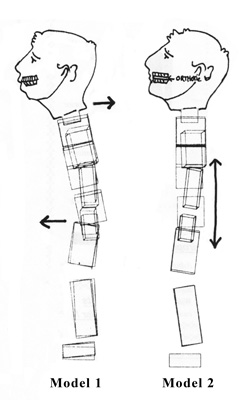
Treating TMJ with a Splint vs. Orthotic
When it comes to relieving pain for your TMJ, it can be done by finding temporary relief, or working towards a cure. Out of the many treatment types, using a splint or orthotic are popular options. Learn more about each and what they can do for you.
Splint
The splint is designed for palliative use only…it cannot achieve a “cure”. A general dentist office is going to follow a treatment protocol that includes a less dynamic approach. The splint is made from a variable thickness of plastic that is non-measured. Typically it is worn on either the upper or lower arch at night. The patient is discouraged from chewing any foods that challenge the muscles and from opening wide to prevent symptoms from getting worse. A compromised life of pain and dysfunction with Ibuprofen and/or pain relievers can be a daily ritual.
*It cannot protect the patient from dysfunction while swallowing and chewing during the day.
At TMJ Pain & Sleep Center, we approach treatment and the use of splints differently. Splints are only used for two weeks during the treatment process and are worn 24/7 with the exception of eating. This differs from other offices since they do not measure the mouth for the splint and usually advise to just wear the splint at night. At the TMJ Pain & Sleep Center, our splints are made of a softer material and are used in preparation of the next step of treatment.
Orthotic
The neuromuscular orthotic is derived from muscle measurement and tomographic x-ray imaging to deliver a precise 3-dimensional position for the mandible. The orthotic is made to this objective position and the patient is then educated to use it 24/7, especially while eating. The more muscles engage in proper function the better they feel. The orthotic also protects the TM joints from the original bite, which places the condyles too far back within the joint itself, causing pain and reduced function (dysfunction). The positive changes in patient symptoms can be dramatic!
Patients are seen monthly at the TMJ Center to measure muscle/postural change. The patient will undergo rigorous testing again in approximately 3-4 months. Healthy muscles in the facial area along with improved posture can create changes in the bite. This positive change is monitored and adjusted accordingly based on the information provided by the neuromuscular computer. This evaluation can detect changes within .1 mm! The orthotic becomes a dynamic instrument because it can be measured and adjusted as change to the musculature, joints, and posture occur!
With the orthotic a cure can and will happen. Consistent, repetitive function creates strength and symptom-free patients.
TMJ Treatment
Phase I TMJ treatment involves 24/7 orthotic wear until stability* is achieved.
*both jaw and postural
Phase II treatment offers option to maintain the stable bite position without the continuous use of the orthotic.
Posture affects the TMJ symptoms-TMJ symptoms affect posture-Therefore there is a need for both treatments simultaneously.
Overall Comparison:
A splint is a generic, static appliance for nighttime use, while an orthotic is measured and used in a dynamic fashion 24/7, including eating, and will lead to a symptom-free cure. Along with these options, there are other TMJ treatments as well. If you are still trying to decide splint vs orthotic, sign up for a free cure consultation to learn more about how a custom-fit orthotic can cure your TMJ symptoms.
